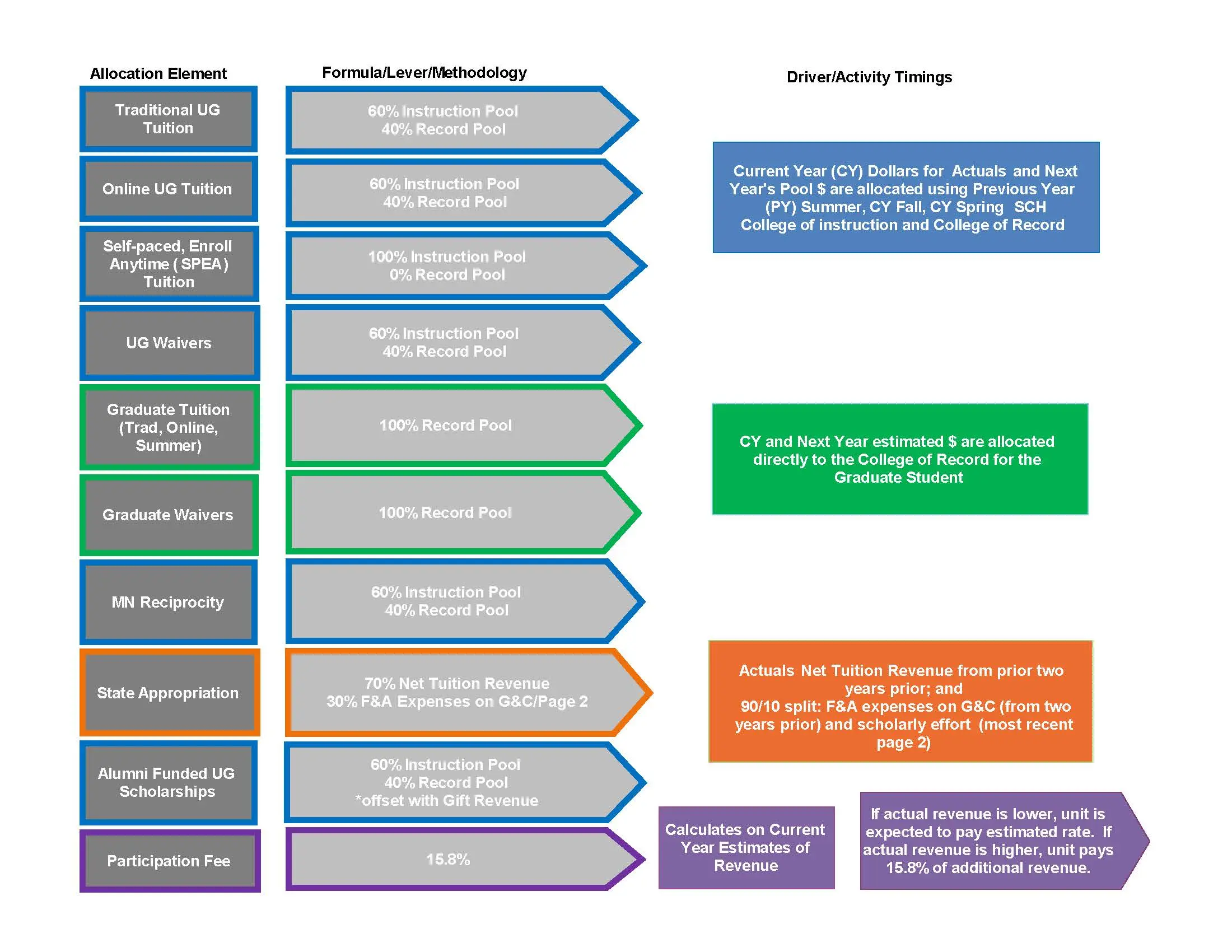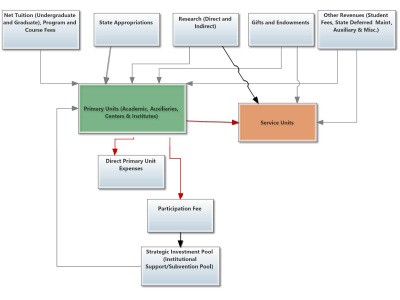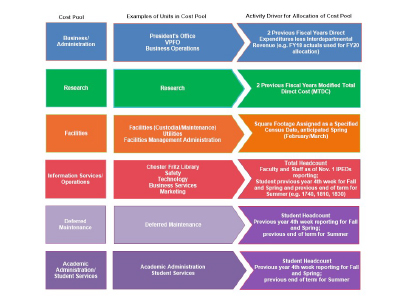Incentive-based Budget Model
The Incentive-based Budget Model is a decentralized responsibility centered management approach to budget planning.
The model assigns greater control over resource decisions to deans and directors. Revenue-generating areas are referred to as primary units with most of the institution’s revenues and support costs assigned to them. The model’s underlying premise is that the decentralized nature of the budget entrusts academic leaders with more control of financial resources, leading to more informed decision-making aligned with the UND Strategic Plan.
About the Incentive Based Budget Model
Model Structure
Much effort was made to acknowledge the complexity and diversity of UND, yet keep the model simple to allow for everyone to understand the flow of resources.
Revenue is tied to activity levels, such as student credit hours, grants awarded, ticket sales, etc.
- As these activity levels increase so does the revenue to the unit that is helping to generate the activity levels.
- In the incremental model, Academic units were asked to budget unrestricted direct expenditures and monitor their direct expenditures.
- In Incentive based budget model, units are expected to budget revenue and manage a “bottom line.” This makes revenue very important. Undergraduate tuition and state appropriations tied to instruction are the two largest revenues.
Funds Flow Overview
Tuition Revenue Allocation
The model allocates tuition dollars based on credit hour production. For undergraduate tuition credits, the tuition dollars are allocated to the college of instruction (60%) and the college of record (40%) so both colleges involved share in the revenue. Graduate tuition goes directly to the college of record. All course fees and program fees flow directly to the colleges, just as they did in the incremental model.
Program and Course Fees
These revenues will flow directly to the College and Schools. They have a documented reason for receiving these revenues, and funds should be expensed within the parameters of those reasons. This income is not charged the participation fee.
State Appropriations Allocation
The model allocates state appropriations based on two factors – instruction (70%) and research (30%). Taxpayer dollars are provided to UND to serve the state in the instruction of students and the advancement of research.
Research (Direct and Indirect)
All revenues (including indirect cost recovery) for sponsored revenue (grants & contracts) will flow to the unit that is awarded the grant & contract. As mentioned in the State Appropriation heading above, beyond the awarded amount and the indirect cost recovery, a portion of the state appropriation will be allocated to the units generating the sponsored revenue. The direct research dollars are not charged the participation fee. The indirect cost dollars are charged the participation fee.
Gifts and Endowments
Gifts and endowment income flow directly to the unit in compliance with the donor’s intent. This income is not charged the participation fee.
Auxiliary and Miscellaneous Revenue
These revenues contain a variety of revenues, such as ticket sales, housing and dining contracts, etc. Funds generated from these activities flow directly to the unit that provided the services or product.
Direct Primary Unit Expenses
Salaries, fringe benefits, operating, and capital equipment expenditures are charged to the unit incurring the expense. These are the typical direct expenses that have always been budgeted and monitored.
Allocation of Service Unit Costs (Indirect Expenditures)
Incentive-based Budget Model brings stakeholders to the table to understand and consider areas important to UND’s success. All Service Units have been grouped into a manageable number based on an allocation method and if too large, administrative structure. These groups are called cost pools. UND has six cost pools. The best practice to allocate these costs to the Primary Units is a logical activity driver. In other words, a Primary Unit’s percentage of the total of the named activity. Below are the six cost pools with the activity driver listed in the parenthesis.
- Information Services/Operations (Total Headcount – faculty, staff and student)
- Facilities (Square Footage)
- Deferred Maintenance (Student Headcount)
- Academic Administration/Student Services (Student Headcount)
- Business/Administration (Direct Expenditures)
- Research (Modified Total Direct Cost)
Strategic Investment Pool (Institutional Support/Subvention Pool)
In the development of Incentive-based Budget Model, it was recognized that there needed to be a mechanism to fund initiatives that are important to UND as a whole and balance the operations for units who, for a variety of reasons, are unable to breakeven when the new costs (Service Unit Allocation and Participation Fee) are added. We have named this pool the Strategic Investment Pool (or it has been called Subvention/Institutional Support pool). The pool is funded by assessing a participation fee to all Primary Units. The participation fee is a percentage of (currently at 15.8%) specified unrestricted revenues of the Primary Unit.
The Provost and Executive Budget Committee will make the determination of appropriate balancing amounts and approve strategic investment proposals. As we transition to the new model, it is expected that the pool will be used more for balancing than investing. As Primary Units adjust and develop strategies and as conversations with Service Units mature, it is expected that the Strategic Investment pool will be used for more investing than balancing.


